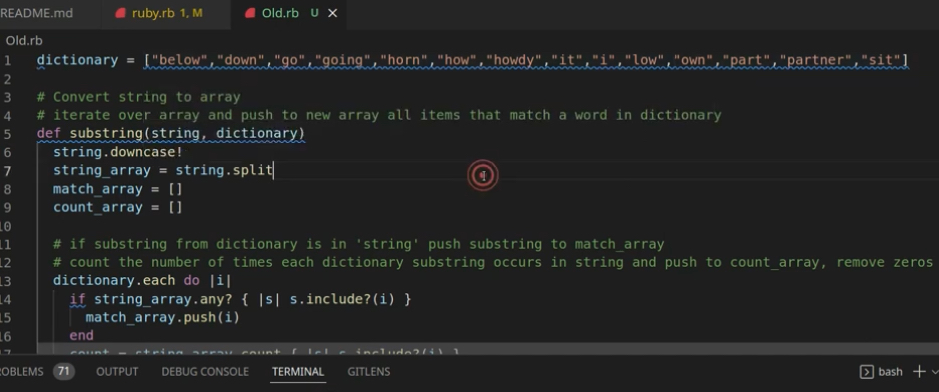In Ruby, string manipulation is a fundamental skill, involving the combination of multiple strings into a single entity. This capability is crucial for data processing, user interaction, and dynamic content generation.
Techniques for Combining Strings
Ruby String Concatenation
String concatenation in Ruby can be achieved using the + operator or the += operator to append strings together.
Example:
| greeting = “Hello”separator = “, “name = “world”greeting + separator + name# Returns: “Hello, world” |
Alternatively, direct concatenation without variables:
| puts “Hello” + ” ” + “world”# Outputs: Hello world |
Ruby String Interpolation
String interpolation offers a more dynamic and readable approach to combine strings and variables.
Example:
| age = 30name = “Alice””Hello, my name is #{name} and I’m #{age} years old.”# Returns: “Hello, my name is Alice and I’m 30 years old.” |
Efficient Concatenation with Ruby Methods
The Concat Method
For merging strings more efficiently without creating new ones, Ruby’s concat method modifies the original string.
| phrase = “”phrase.concat(“Hello”).concat(” world”)# Returns: “Hello world” |
The Shovel Operator (<<)
An alias for concat, the shovel operator <<, appends strings while modifying the original string.
| phrase = “”phrase << “Hello” << ” world”# Returns: “Hello world” |
Handling Non-String Variables
When combining a string with a non-string variable, ensure conversion to a string to avoid errors.
| number = 5″Number: ” + number.to_s# Returns: “Number: 5” |
The Power of String Interpolation
Interpolation automatically converts variables to strings, streamlining the incorporation of various data types into a string.
Advanced String Combination Techniques
Prepending Strings
Ruby allows for the addition of strings to the beginning of another string using the prepend method.
| str = “world”str.prepend(“Hello, “)# Returns: “Hello, world” |
Comparative Table
| Method | Description | Example |
|---|---|---|
| Concatenation (+) | Utilizes the + operator to join two or more strings together. | “Hello” + ” World” |
| Append (+=) | Uses the += operator to add additional strings to the end of an existing string. | str = “Hello”; str += ” World” |
| Concat Method | Directly modifies the original string by appending another string to it. | str.concat(“Hello”) |
| Shovel Operator (<<) | Also known as the shovel operator, it appends a string to another string in place. | str << “Hello” |
| Prepend Method | Adds a string to the beginning of another string, modifying the original string. | str.prepend(“Hello”) |
| Interpolation (#{} inside “”) | Embeds variables or Ruby expressions inside a string literal. | “#{name} is #{age} years old.” |
Video Guide
To answer all your questions, we have prepared a video for you. Enjoy watching it!
Conclusion
This guide has detailed the methods and practices for combining strings in Ruby, covering concatenation, interpolation, and efficient string manipulation techniques. Mastery of these methods enhances the readability and performance of Ruby applications, enabling developers to handle strings with ease and precision.


